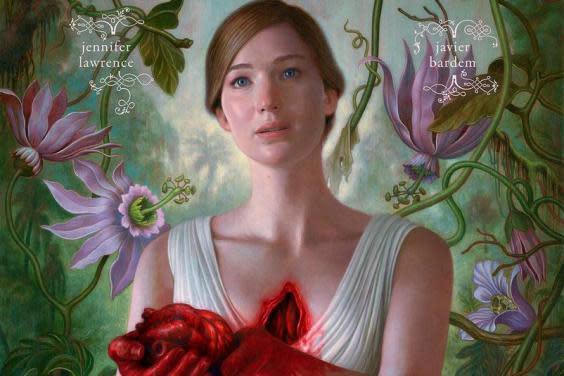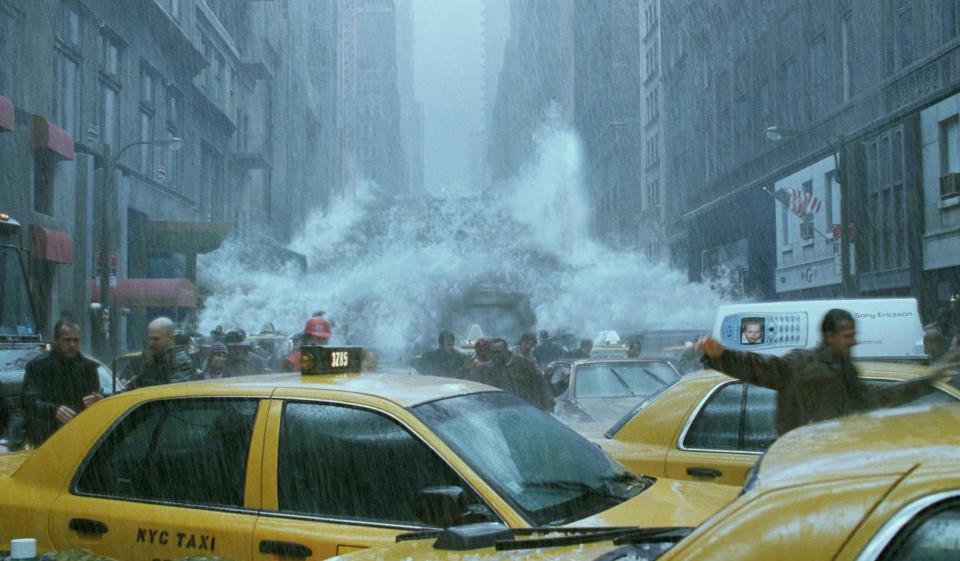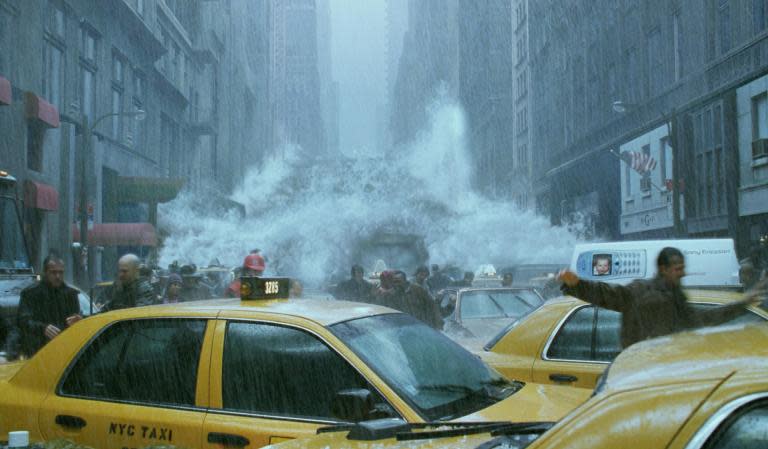Why is mainstream culture so quiet about climate change?
The weather in England has been weird. I got a little burnt sunbathing in February. The snowman in the garden had recently melted.
Meanwhile, the news is full of climate change and ecological collapse. This week alone, Cyclone Idai has led to unprecedented devastation and loss of life in southern Africa; the chief executive of the Environment Agency warned that England could run out of water in 25 years, and the most endangered marine mammal, a small porpoise called vaquita, is down to just 10 animals. The consequences of our relationship with the rest of the living world are fast becoming fatal for many, and unsettling and disturbing for those not yet directly affected.
But when I sit down in the evening and flick on the telly, browse the cinema listings or put on some music, I don’t find the biggest story on earth. The arts in the mainstream, from low to highbrow, are strangely silent on climate breakdown, species extinction and the multiple symptoms of human-earth relations. I was pleased, almost weirdly relieved, to see Grimes announce this week that her new record will be a concept album confronting climate change. She has created a character called Miss_Anthrop0cene – a play on misanthrope and Anthropocene, the epoch defined by humanity’s impact on the earth – and intends to try and “make climate change fun” (good luck with that!) and “exist as a character and not just abstract doom”.
[[gallery-0]]
Elsewhere, the silence is deafening. On one level, the subject is ripe for Hollywood horror movies and apocalyptic scenarios and stories of corporate derring-do. On another, it plays out the most dysfunctional family relationship of all: humans and the earth. Emotionally, there are riches, of anger and injustice and guilt and shame and psychological terror and wonder and awe. For dramatic intensity, the stakes have never been higher. But, especially as the impact of a changing climate accelerates and millions of young people mobilise in school strikes, the dearth feels baffling and peculiar. When will music and television and film and fiction start to truly capture the zeitgeist of ecological and climate anxiety?
Of course there are examples of environmental art: of Hollywood sci-fi thrillers (Waterworld, The Day After Tomorrow), novels (Margaret Atwood’s Oryx and Crake; John Lanchester’s The Wall), songs (Anohni’s “4 Degrees”, Radiohead’s “Idioteque”, and Pixies’ “Monkey Gone To Heaven” to name but a few) and many non-fiction books. But given the scale of the environmental crisis, it’s slim pickings. Many apocalyptic films cast the threat and the danger as outside of human agency. As David Wallace-Wells put it in Slate, “In the many zombie apocalypses of this era of ecological anxiety, the zombies are invariably rendered as an alien force, not an endemic one. That is, not as us.”
One recent, compelling depiction of humanity’s destruction of the more-than human world is Mother!, Darren Aronofsky’s 2017 psychological thriller, which he described as an allegory of climate change. Jennifer Lawrence – Mother Earth – tries to protect the beautiful house she is so proud of from various uninvited visitors, who trash and disrespect her home, break and steal objects, and grope her. Her lover, a feted writer, played by Javier Bardem, invites them in as if he has no choice, his head turned by fame and vanity, and is complicit in their burglary and assault. “Mother” is ignored, undermined, gaslit and taken for granted, literally trampled underfoot as the house turns into a dystopian war zone. “I gave you everything. You gave it all away,” she says to Bardem, and us.

It’s refreshingly thoughtful, but a one-off in mainstream culture. Why would this be? Perhaps one of the problems of depicting ecocide is audience aversion to anything preachy, didactic or demanding of a lifestyle change. The songwriter Toby Gad, who co-wrote the charity single “Love Song to the Earth” with artists including Paul McCartney, Natasha Bedingfield and Sean Paul, talked retrospectively about the challenge of writing about the environment without sounding “preachy” or too “doomsday”. “Half of America would turn it straight off,” he told the BBC, if they’d used words like global warming or climate change.
What’s more, the facts are, frankly, terrifying and hard to comprehend – paralysingly so. It is often easier to pretend everything is OK. Perhaps the cultural vacuum simply mirrors our widespread disconnection and turning away.
In an excellent recently published book called Bad Environmentalism, the California-based academic Nicole Seymour offers another way cultural representations can work. She looks at the value of irony, absurdity and irreverence in responses to the environmental crisis (the Jackass spin-off Wildboyz; Green Porno, starring Isabella Rossellini) and casts a critical eye at more traditional, earnest depictions of earth-human relations (Avatar; early 20th century wildlife programming that promoted “moral values”). She explores how queer environmentalist artworks can “disrupt the classic binary of privileged, expert environmentalists”. She shows how humour and satire allow writers such as Sherman Alexie and Percival Everett to “confront enduring legacies around Native American and African American relationships to the environment”. Ultimately, these modes, she argues, allow for the building of new, idiosyncratic relationships to the earth, “through which to approach, understand, care for, and grieve landscapes and animals, as well as people”.
Perhaps another issue is our lack of basic materials. We don’t yet have the vocabulary to express what is happening. Earth Emotions, a new book by the Australian environmental thinker and academic Glenn Albrecht, speaks to this need for a new language to tell ecological stories. He posits that there aren’t the adequate words in common English vernacular to describe the emotional state of our ecological age. In response, he has been working to create a “psychoterratic typology”, which defines both positive and negative Earth emotions.
Albrecht is most known for the concept of solastalgia, which means “the pain and distress caused by ongoing loss of solace and the sense of desolation connected to the present state of one’s home and territory”. As climate breakdown accelerates and ecosystems decline, the emotion will be felt by more and more people. It’s related to eco anxiety (anxiety about the state of nature), meteor anxiety (eco anxiety connected to the potential for extreme weather, storms, drought, and so on) and global dread (terror about the future of the world). By naming these emotions – and he offers positive concepts too – Albrecht offers a framework within which to understand and acknowledge the dissociation of humans from the living world. With a new language and means of expression, a wider array of stories from diverse voices can hopefully be heard.
For the world is changing and so will the stories and expressions we seek out. What purpose should popular culture serve in the face of the end of the world? Information? To open people’s eyes to the damage we are doing to the earth? See how the final episode of David Attenborough’s Blue Planet II inspired real change in how we consider and use single-use plastic. Or distraction? Catharsis? Comfort? Escapism? Is that right? Should we even be entertained? Will we even have time to watch TV in an age of climate chaos?
For many people living in countries in Europe, we are oblivious to ecological decline. It is impossible for most of us to visualise the loss of ground-nesting birds or natterjack toads or 70 per cent of butterfly species or the scores of other British wildlife at high risk of extinction. We might have been affected by the kind of extreme floods that climate change will make more frequent, and air pollution is starting to endanger people’s health, but in Europe, we are further removed from how our habits of consumption damage our environment than those in other parts of the world.
Could stories, narratives and popular culture be the solution to this failure of imagination? Could they spur us into action? Sometimes, stories, music and art can move us in a way that hard facts don’t.

 Yahoo Movies
Yahoo Movies 

